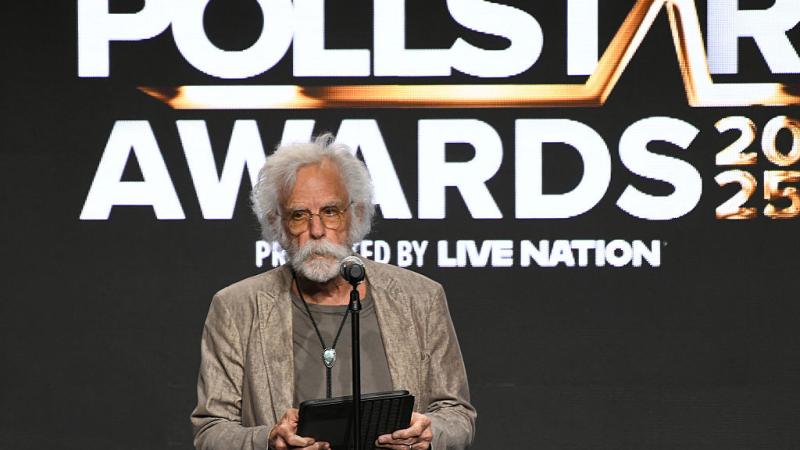Norway's national postal service bids to make the Yuletide gay with nontraditional Santa
Posten's ad, "When Harry Met Santa," depicts two adult men kissing, with one dressed like Santa. One of the men writes a letter to Santa stating, "Dear Santa, All I want for Christmas is you."
Nothing and no one, factual or fictional, is immune, it seems, from the forces of woke revisionism — not even Santa Claus, the personification of the Christmas season, whose iconic image has taken shape through centuries of folklore and commercial advertising, primarily in Europe and North America.
Santa Claus, also known as Father Christmas, Saint Nicholas, Saint Nick, Kris Kringle, or Santa, has been known worldwide as a rotund, jolly white man with a bushy, white beard. Dressed in a red and white suit, wearing a black belt buckle and black boots, he drives a sleigh pulled by reindeer to bring children all over the world gifts solely on Christmas Eve.
According to various traditions, parents leave out milk and cookies, and the next day, on Christmas morning, children are told Santa came by, drank the milk and ate the cookies, and left them presents.
A well-known song that saturates the airwaves in the weeks prior to Christmas warns that "Santa is coming to town" to judge children who are "naughty or nice," encouraging them to behave in order to get presents. (Naughty children, and adults, get a lump of coal.)
But Norwegian children may encounter a different version this Christmas, through a national advertising campaign portraying Santa as a gay man.
Norway's national postal service, Posten, publishes a Santa-themed ad every year. This one depicts two adult men kissing, with one dressed like Santa. In the video, one of the men writes a letter to Santa stating, "Dear Santa, All I want for Christmas is you."
The ad, entitled, "When Harry Met Santa," is a play on words alluding to the title of the popular romantic comedy featuring Meg Ryan and Billy Crystal, "When Harry Met Sally."
The ad ends with a statement noting that by next Christmas in 2022 Norway will mark the 50th anniversary of "being able to love whoever we want," a reference to its government decriminalizing homosexuality 50 years ago next year.
"It has been a dark year for everyone — A global pandemic, code red for our planet, refugee crisis and more," Monica Solberg, Posten's marketing director, told told LGBTQ Nation. "Perhaps what we need this year is a warm and heartfelt love story? A celebration of the fact that we can love whomever we want in Norway, despite everything bad that happens around the world."
Last year's ad depicted Santa being angry with Posten for taking business away from him, Solberg said.
While some praised the ad, others criticized it. British singer Steve Brookstein tweeted,
"Norway making Santa a closet homosexual cheating on Mrs. Claus is the worst Christmas idea….EVER!"
The ad comes not long after a New Zealand shopping center made headlines for unveiling a "gender fluid" Santa in its Christmas display — and amid ongoing debate over the gender of his reindeer.
Ponsonby Central in Auckland in 2018 hoisted a giant Santa on top of its building, with an exposed fat belly protruding from a red coat, wearing fishnet stockings.
"The Coca-Cola company doesn't have a monopoly on what he/she looks like," Ponsonby said of its display at the time, alluding to a series of commercial illustrations commissioned by the Coca-Cola company in 1931 that did much to crystallize the modern image of Santa.
Those paintings, by illustrator Haddon Sundblom, "established Santa as a warm, happy character with human features, including rosy cheeks, a white beard, twinkling eyes and laughter lines," as Coca-Cola claims on its website. Sundblom's Santa was inspired by an 1822 poem by Clement Clark Moore called “A Visit from St. Nicholas,” popularly known as "Twas the Night Before Christmas."
Also in 2018, logo design firm GraphicSprings conducted a survey to gauge the public's view on Santa's gender. Among its sample of 400 American and British adults, the majority, 70%, said Santa should be a man.
Years before this, a topic pondered by wildlife experts and American academics was that of the gender of Santa's fictional reindeer.
"Santa's reindeers were really females, most likely," Alice Blue-McLendon, a veterinary medicine professor at Texas A&M specializing in deer, told Fox News in 2008.
Her analysis was based on the size of the antlers depicted in literature, popular culture and movie images of Santa's sled-bearers, compared to real-life reindeer.
Both male and female reindeer grow antlers, but bulls typically shed them before Christmas.
Greg Finstad, at the University of Alaska Fairbanks, said Santa's reindeer might be castrated males, or steers, because people who sled in arctic temperatures usually use steers. Also, females might be pregnant and not able to pull a sleigh, since their three-month mating season usually runs from September through November.
Blue-McLendon explained years later in another commentary that in some parts of the country, reindeers played an important role during the Christmas season. "In the early days of Alaska's history, some mail routes were made with sleds pulled by reindeer, so it's likely they even delivered some Christmas cards, too," she said.
The American experts note there are two genders of reindeer: male and female. And only the female deer get pregnant, meaning, gender fluidity doesn't exist among reindeer, even among the fictional ones pulling Santa's sleigh.
















